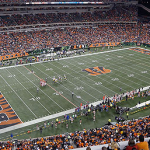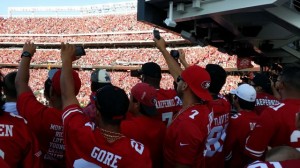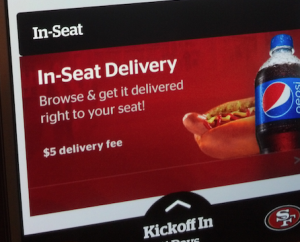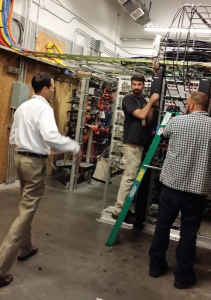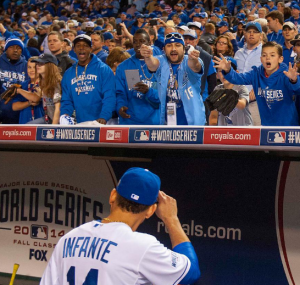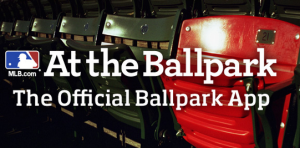Editor’s note: The following team-by-team capsule reports of NFL stadium technology deployments are an excerpt from our most recent Stadium Tech Report, THE FOOTBALL ISSUE. To get all the capsules in one place as well as our featured reports, interviews and analysis, download your free copy of the full report today.
AFC EAST
Reporting by Chris Gallo
Buffalo Bills
Ralph Wilson Stadium
Seating Capacity: 71,757
Wi-Fi – No
DAS – Yes, 200 antennas
Beaconing – No
The Buffalo Bills have had a busy offseason. After the passing of longtime owner Ralph Wilson, the organization was bought by Buffalo husaband-and-wife team of Terry and Kim Pegula for $1.4 billion. Even while the future of the team was uncertain, the stadium named after its longtime owner became fan-friendlier. New gates to enter the stadium, HD video boards, and increased cell service are just a few of the improvements. No Wi-Fi, but Ralph Wilson Stadium does have over 200 DAS antennas.
New England Patriots
Gillette Stadium
Seating Capacity: 68,756
Wi-Fi-Yes
DAS-Yes
Beaconing – No
The New England Patriots are doing everything to get fans off the couch and in Gillette Stadium, with Wi-Fi outfitted by Extreme Networks, a team-centric Game Day Live mobile app, and a squad that’s won the AFC East 5 years in a row. Is it time for another Patriots Super Bowl run?
Miami Dolphins
Sun Life Stadium
Seating Capacity: 75,540
Wi-Fi – Yes, 1,100 access points
DAS-Yes
Beaconing – Yes
Near the end of the 2013 season, Sun Life Stadium became one of the NFL’s first venues to feature beacon technology. The Qualcomm Gimbal contextual awareness platform delivers coupons for concessions as fans walk by and alerts them of shorter wait times on the concourse. Plus, AT&T upgraded the stadium with more than 1,100 Wi-Fi access points and DAS antennas a year ago. All of this has the Dolphins delivering one of the better wireless game day experiences. The search to find a new Dan Marino, however, is still a work in progress.
New York Jets
MetLife Stadium
Seating Capacity: 82,500
Wi-Fi – Yes, 850 access points
DAS – Yes, over 600 antennas
Beaconing – No
There are lots of benefits to hosting a Super Bowl – including the improved connectivity of your stadium. After AT&T and Verizon spent over a year outfitting MetLife Stadium with their own DAS deployments, the stadium saw a 60 percent increase in wireless data from the previous Super Bowl. Safe to say the stadium is well-equipped to easily connect fans with 850 Wi-Fi access points and more than 600 DAS antennas. MetLife Stadium enters its fourth season and continues to make the fan experience unforgettable. Now can the Jets make 2014 an unforgettable season and find their way back to the playoffs?
